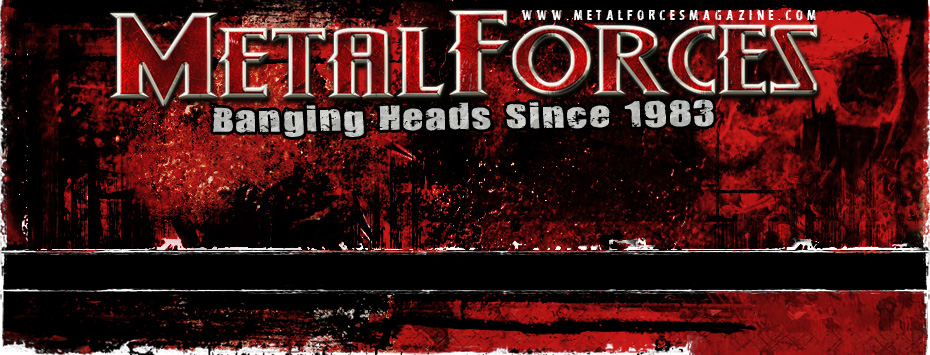
MY DYING BRIDE – Rock Till Doomsday
Anthony Morgan
October 2012
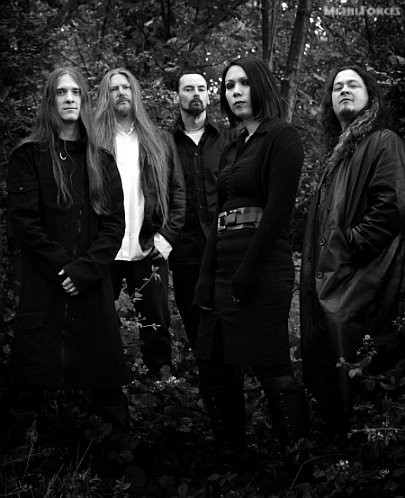
|
Parts for 11th My Dying Bride studio full-length A Map Of All Our Failures began to be authored during early 2011, guitarists Andrew Craighan and Hamish Glencross writing various components at home. On a monthly basis the outfit met, sharing and placing together their collective ideas. “Quite a big” database of ideas spanning a year resulted, forming the basis of what became the Yorkshire, United Kingdom-based doom metal group’s 2012 offering.
“We had so much material that we actually started to put it together in what is recognisable song form,” remembers Aaron Stainthorpe, vocalist and co-founder of My Dying Bride. “It’s fun but it’s also hard work as well, because you’ve gotta make sure that with all these great ideas you don’t spoil the broth as it were, so we constructed the songs in the best way we thought we could.
“We recorded 13 songs in total, although only eight appear on the album. One will appear on a special edition of the album and the other four will appear on the new EP, which I’m guessing will probably come out around April 2013. We recorded at Futureworks in Manchester where we’ve recorded the last few albums. Mags (Robert Magoolagan) was the engineer again. I’d love to be able to tell you some funny anecdotes about it, but to be honest, we kind of really nailed the songs before we hit the studio. It was all a case of ‘Heads down. Let’s get this over and done with. Let’s not waste time. Let’s be as professional as we possibly can.’ We were in and out of the studio in a fairly quick time with a fairly polished piece of vinyl, which we are all chuffed with.”
November 2011 EP The Barghest O’ Whitby was penned during these writing sessions. “It was a surprise for all of us actually, was Barghest,” the frontman admits. “We certainly never planned on writing a song as long as that, but typically when we do write songs we don’t bother wondering when it’s going to end. We simply keep writing until everybody in the band is happy that they’ve had their input, and as a collective we feel the song is complete. With Barghest we simply didn’t bother looking at the clock, and when it came to saying ‘Right, I think we’re all happy with that’ it ended up being 27 minutes long. Probably not ideal for the record label, because it was probably not gonna get much radio play. We’re lucky though we’ve got a record label who’ve backed us for years and have told us we can do pretty much anything we want, which is great. Not many bands can have that much artistic freedom, surely.
“So yeah, Barghest was around that same sort of time. We had a lot of riffs in our database – which I keep calling it – to choose from, because normally when we record an album we would only write enough music for one album, record it, and then release it. For the first time ever we’ve written more than we needed, and recorded all 13 tracks knowing damn well that they wouldn’t all fit on the album. The label said ‘Yeah, cool. We’ll do an EP as well sometime in 2013.’”
A bonus number included on A Map Of All Our Failures’ special edition version, ‘My Faults Are Your Reward’, additionally surfaced. “You know what record labels are like,” Aaron observes. “There’s always some sort of digipack, fold-out limited thing, which I quite like. When I was younger I would collect picture discs and goodness knows what, so I quite like special editions. ‘My Faults Are Your Reward’ is sort of typical My Dying Bride in that it’s a song regarding failures, and how other people can somehow take advantage of your failures and become better… or they think they’re gonna become better people because of what’s gone wrong with you. They’re quite nasty people really.
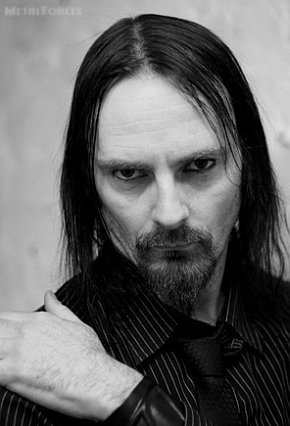
|
“So yeah, there’s a bonus track there for the diehards and as I say, an EP sometime in 2013 as well. We’ve got quite a lot of material at the moment – more than I think we’ve ever had – which I think is a testament to how effervescent we are when it comes to writing at this moment. We’ve got a flood of ideas, and we’ve still got – in this database – loads more ideas. We simply weren’t able to get down at this moment in time, so it wouldn’t surprise me if some of the stuff that hasn’t been used for A Map Of All Our Failures would turn up on something we release in the future.”
A Map Of All Our Failures explores familiar territory, lyrically speaking. “It might sound a bit dull for me to admit, but it’s the doom and gloom that people have come to expect from us over the years,” the singer confesses. “There are some sad, tragic love songs, there are songs filled with hate, there’s a bit of aggression, and there’s obviously a pop at religion. I can’t help myself going down that route from time to time, but they are the subjects that people want from My Dying Bride as well. It would be criminal of me to start singing about politics in a very upfront manner, or technology, or something a bit more contemporary. People don’t want that from My Dying Bride, and I don’t want that from me. The music I create is escapism; I want people to listen to our music, and drift off to a different time and a different place, and forget all of their daily woes. The last thing I’m gonna do is sing about their daily woes right into their faces. I would want our fans to put their headphones on, turn the music up, and just lie on their bed and really indulge themselves in it without any content within the album bringing them crashing back down to Earth.”
A Map Of All Our Failures is arguably quite a heavy album title though, and perhaps at odds with an escapist strategy. “Yeah, but again people want that sort of stuff,” Aaron counters. “We’ll never be one of these bands who uses one-word titles. You need to at least give the fans a bit of a hint to some of the content. A one-word title doesn’t do anything, unless it’s Hate or something crazy like that. I like words and I like the theatre, and so being theatrical with words is what I do. People have come to expect that from me, and so I’d like to think that I deliver something that they want.”
The mainman’s writing habits reflect his listening habits, his music collection not including more overtly political material. “You’re not gonna see much political music in my CD collection – there’s no Black Flag in there, for example,” he divulges. “There’s a place for that kind of stuff, and it’s simply not my place (laughs). I like my music to be a vehicle to transport me to somewhere else, somewhere away from the rat race, away from the taxman and the annoying neighbour and the car that won’t start, the money that I don’t have and the people who want my money. My music has to take me away from all that shit, so that I’ve got somewhere to go that isn’t all nasty. Despite the fact that some of the music I listen to is quite morbid, it’s morbid I think in a beautiful way. It’s the escapism that’s the most important thing for me though, and that’s why I write things which some hard-nosed journalists might say is a bit airy fairy. Fine though; that’s what I want. I want to be taken away to a different place and a different time for an hour, and I don’t think that’s too much to ask.”
Some political groups seem to want to convert individuals towards their ideas, as opposed to playing to individuals for their musical enjoyment. “That’s true,” Aaron agrees. “There are political bands out there who slag off whatever it is they’re slagging off, and they’re trying to get you to aggressively follow whatever movement it is they’re a part of, be it CND (Campaign For Nuclear Disarmament), or Greenpeace or whatever, or some other subgenre. You sometimes think ‘Is this music now, or is this a campaign?’ I’m just not into that – I don’t preach. I tell stories to some great music and for me that’s my opinion of what music should be, but everyone has their own opinion. If somebody wants to scream and shout in a political manner, they have every right to do that. It’s just not my cup of tea.”
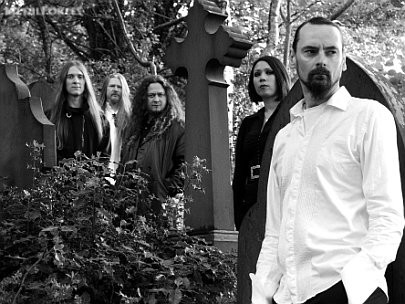
|
Title cut ‘A Map Of All Our Failures’ “is about a guy who has nothing left, and not just physically,” the co-founder reveals. “The idea was he sat in a room which has a bed and a chair, and nothing else. Everything he’s had in his life has gone through wrong decisions, bad decisions, dodgy characters, and so on. Now he has ended up with nothing, but it’s a mental thing as well. He realises he’s got no love. He’s never loved, and you could argue that if you’ve never loved then you’ve never lost properly. He feels like he’s lost everything, so it’s complete and utter desolation. I’m sure some people feel from time to time that the world is really against them, and in realistic terms it probably never really is. You’ve always probably got a roof over your head, or can find something like that. I wanted to write a song about someone who really has absolutely nothing, and that’s what ‘A Map Of All Our Failures’ is about. He’s realised that there is nothing there. The map itself if you want could be completely blank; it just contains nothing, and there’s nothing left to live for. I’m not suggesting for one moment that suicide is on the menu for this evening, but you just wonder sometimes. If somebody actually has absolutely nothing, can they survive that?”
Unfortunately, some turn in the opposite direction and kill other people as well as themselves. “That is true, yeah, but that’s a consequence of the world we live in unfortunately,” Aaron laments.
The vocalist relates to the title number’s central character. “To be honest, I get moments like that,” he confesses. “Obviously I’ve over-dramatised it because I’m an artist, and that’s what artists are allowed to do. You take an idea, and you really flesh it out and give it the full monty as it were. We’ve all felt lonely, and there are times when you just kind of sit there looking out of the window, especially where we live in Yorkshire. It’s pouring with rain, and you just think ‘There must be more to life – there must be. Am I missing something? Am I doing something wrong? Life isn’t giving me what other people have got.’
“You get a little bit low in general, and I do quite like a glass or two of wine. Obviously when you’ve had a little bit too much those sorts of feelings balloon, and you get a bit more theatrical, thinking ‘Woe is me. Oh, the world is full of toil’ and all that sort of lark. I take an idea, and I really like to flesh it out and take it to the very nth degree. Hence that song is taken to a moment where I felt a bit low and a bit blue, and I’ve really sort of run it and pushed it as far as it would go. The result is that particular track.”
Listeners might assume that a “pop at Christianity” arrives in the form of ‘Abandoned As Christ’, but this isn’t the case. “It would be the obvious choice to some people, but no, that song is a real obscure track,” Aaron cautions. “I’ve mentioned this in a couple of interviews in the past… I encourage our fans – again, mostly the diehards – to just read between the lines a bit with that song, because there’s something else going on which isn’t immediately obvious in the title. It’s less to do with religion, and more to do with – again – people trying to get one over on you, and you feeling left abandoned as it were. There’s a track… Again, I keep mentioning the EP. I should be really promoting that later, but there’s a track on the EP which is much more anti-religious and it’s not really particularly any religion specifically.
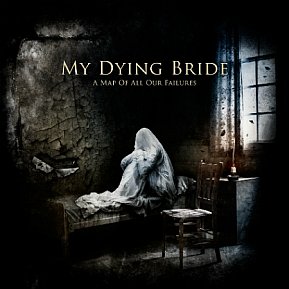
|
“It’s more to do with the pressure of religion as it comes knocking at your door. No matter how much you try to close that door, they always try to put their foot in it and try just that little bit harder to get right into your face when you really don’t want them to. You can probably apply that message to any religion really. I guess it depends on where you’re from, and who you consider to be the enemy of your God. There’ll be some people thinking ‘Ah, yeah. I know exactly that guy’, just by them having religious beliefs themselves. Really, you could be looking in the mirror. I guess we can talk about that when we come to promote that.”
Merely a handful of moments on A Map Of All Our Failures bear anti-religious sentiment. “They’re almost out of context though,” the frontman notes. “There are times within a song when I just like to go off on a tangent every once in awhile, and then come back into the narrative. There are a couple of little spiky lines which are references to various religious things – lords, gods, deities and what have you – but the songs themselves aren’t specifically anti-religious. There are just shining little moments just to let you know that we haven’t abandoned it completely.”
May 2011’s Evinta sported classical reworkings of previous My Dying Bride material, though revisiting past tunes didn’t influence Aaron in penning lyrics for A Map Of All Our Failures. “I’m sure when people read some of the lyrics from A Map Of All Our Failures though they’re gonna think ‘That reminds me of Turn Loose The Swans,’ or ‘… The Light At The End Of The World,’ or something like that,” he acknowledges. “That’s my style; that’s who I am, and I can’t really shake that – I’m quite glad that I can’t. It’s nice to have an identity, so that when you create something people know that it’s yours. Without constantly repeating yourself it’s nice to have a style that’s recognisable.
“It was great to listen to all of that early stuff again as we were putting Evinta together, but when it comes to writing a new album you’ve got to have all fresh, new stuff. If it’s regurgitated stuff – even disguised regurgitated stuff – people will spot it, especially the diehard fans. They’ll pick it apart. Why put all the effort into writing a new album just to have it pulled apart? It’s all a 100% fresh and new. The past is where it should be; we love it for what it was, but it’s always time to move on.”
Of My Dying Bride’s past full-lengths, the singer cannot select a favourite. “I would like to consider most of our albums like my children; they’re all slightly different, but I love them all,” he muses. “They were right at that time. You might look at them now and think ‘Okay, perhaps that could’ve been better when we did that,’ but at the time… Like with the new album. It’s brilliant and it’s as good as it can be right now, but in ten years I might look back at A Map Of All Our Failures and think ‘Actually, we could’ve polished a few bits here and there.’ At the time it was right though and I’m happy with that. I’m proud of everything we’ve released in the past, and I’m not one of these people who kind of shuns their first album or anything like that. Playing live, any opportunity we’ll sing songs from every single album in the same style that they were recorded in because we’re proud of all that material.”
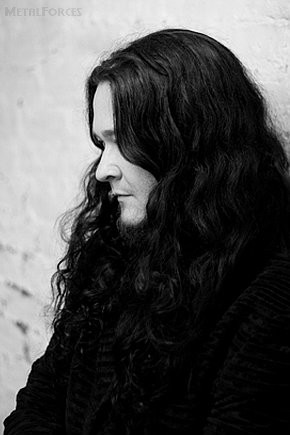
|
A Map Of All Our Failures features a wide array of vocal stylings. “We purposely put a nice little mix in ‘Kneel Till Doomsday’ to show people that there are still a bit of death metal vocals there,” Aaron highlights. “There are some talkies, there is some singing – it’s just a nice variety. We’ve never told people we’re a doom band, and we’ve never told people we’re a death metal band. We’ve always tried to stress ‘Look, we love both genres as well as a bit of gothic.’ We do all these genres and we’ll mix them together, so don’t think we’re just a doom band. To reiterate that, we’ve put that track first to show people that there’s still a bit of aggression. I can’t play an instrument, so I have to do what I can with my vocals.
“I guess with any vocalist you want to try to better yourself with each record, and so it’s nice to try harder to try to hit a few extra notes, and keep it varied on the whole album. There are whispers, there are shouts, there are talkie bits, there’s singing, there’s low stuff, and there’s high stuff. I try to keep a good variety to keep everyone interested, and of course it keeps me interested as well. I like to try to push myself and prove that I can do not just one style, but a few different styles to represent which characters are doing what in each particular song.”
Knowing whether to sing, whisper or shout specific lines and so on isn’t an exact science. “Sometimes you know beforehand because of the way the lyrics are written,” the mainman explains. “If it’s an obvious narrative which tells a quite clear story with a start, a middle, and an end, you kind of know ‘Oh, that line’s definitely gotta be whispered because it’s a real creepy little moment there.’ There’s no point screaming on that. Other times when you’re not a 100% sure what sort of vocals to do, you go into the studio and try a few ideas, most of which you pretty much expect to work. Then there’s a couple you think ‘Actually, I’m not gonna sing this. I’m gonna whisper it, and we’ll just see where that goes.’ Just changing from a standard singing vocal to a whisper suddenly adds a lot of creepiness to a song, and despite whatever riff you’re singing or whispering over it changes the mood quite dramatically. It’s well worth trying out different vocal styles on different riffs and where appropriate, because you can really give a song a good kick up the backside just with that slight alteration.”
A Map Of All Our Failures marks the first My Dying Bride full-length platter to feature violinist / keyboardist Shaun MacGowan. “Shaun’s been great,” Aaron enthuses. “He added a bit on Barghest which was fine, but we’re trying to get him to come out of his shell a little bit more because he’s quite shy. I think he was one-year-old when My Dying Bride formed, so it’s a bit weird him being in the band. He doesn’t wanna tread on anyone’s toes. He’s joined a well established band, and the last thing we want – and the last thing he wants – is him saying ‘I’ve got some shit hot guitar riffs for you guys,’ because he’d get kicked out straight away no matter how good his riffs were.
“We want him to come out of his shell a little bit more, because he’s still quite a shy, young lad. He’s put some great, woeful violin parts on the album though, and they’ve really embellished the material that it’s been played over. It’s haunting and sounds beautiful, but in a tragic kind of way. With the violin it has always been like that for us, particularly in the early days. He added a real good amount to it. All the violin parts have been his own stuff; at no point has anyone said ‘Here, play this.’ He’s said ‘I’ve got this. Does it work?’ We’ve said ‘Yeah, bloody brilliant,’ but we expect more from him in the future. Fingers crossed that on the next album there’ll be a bit more of Shaun.”
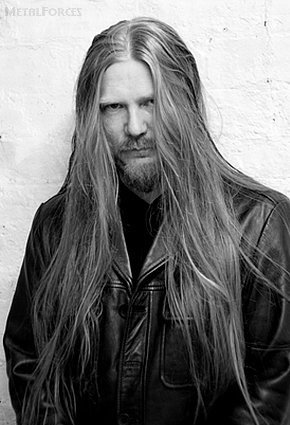
|
A generation separates Shaun and his fellow bandmates. “It’s different working with someone who’s a generation younger because he doesn’t contribute that much, but we want him to,” the co-founder emphasises. “I wonder if he’s thinking ‘Oh, they’re just being polite,’ but we want everyone in the band to feel like they can contribute absolutely anything and feel equal to us. I can understand he’s a young man though, and we’re not (laughs). It’s slightly tricky for him to to just step in and say ‘Hey guys, I’ve got this great idea,’ because we could throw it back in his face. That isn’t likely because we’re not really that kind of band, but it must be awkward. He’s settling down; as each month goes by, he’s definitely gelling a lot more. We’ve just come back from a trip to Romania, and we had a blast. It was amazing, so he’s really settling down. As I say, the next time we come to do another album I expect quite a bit more from him, and I’m sure he’ll be ready to commit.”
As with each and every My Dying Bride outing, Robert ‘Mags’ Magoolagan was at the production helm for A Map Of All Our Failures. “We’ve never not worked with him, so I don’t actually know what it’s like to not work with the guy,” Aaron chuckles. “We’ve worked with him since day one, and we will continue to work with him because he’s unofficially the seventh member of My Dying Bride. He comes with us on the live shows; he does all of our live sound for us, which makes perfect sense. If he’s mastered the album he knows the band and that album better than anyone else, so why not bring him out to a live situation?
“He’s a great guy, and because we’ve worked so long with him he’s quite happy to contribute stuff left, right and centre. If he doesn’t like something or thinks it’s a little bit out there, he’s happy to comment on it. We don’t necessarily take any notice, but he’s comfortable with saying ‘Does that really sound right? Maybe if you change this key, it might sound a bit more interesting.’ Sometimes he’s right and sometimes he’s wrong, but we’re happy for him to contribute anywhere he feels it might be necessary to keep the band upfront and fresh. He’s never gonna slag off interesting and wonderful ideas – he only wants the best for the band, which is great. We’ll try to continue to work with him for as long as we possibly can.”
Mags is by no means a taskmaster. “Oh God, no,” the vocalist responds. “Nothing like that, because the studio is so expensive. You need to have most of the songs nailed before you get into the studio, so if he’s gonna pick faults with anything there’s not a lot left to pick faults with because it’s all pretty much nailed by us. He’s not a taskmaster at all; he will contribute where he feels he needs to or if he’s got an opinion, and that’s fine. It’s nice to hear an outsider’s voice sometimes, because we’ve sat ourselves in this dark, dingy room in Halifax and constructed these songs in our own particular way. To then hear someone else’s voice say ‘Oh, that’s interesting’ or ‘Oh, I’ve got a brilliant idea that might work with this’… We’re all ears and he can say as much as he likes. We love the guy.”
Aaron feels that A Map Of All Our Failures is an improvement on predecessor For Lies I Sire (March 2009). “I think as we’ve got older, we’ve become better songwriters and performers,” he judges. “Well, at least you’d hope so. As the old adage goes, practice makes perfect – that comes to mind here. I mean, I love For Lies I Sire; it’s really well crafted, and I really struggle to pick holes in it now three years down the line. Statistically we should be better at what we do, and I’d like to think we are. I think the songs on A Map Of All Our Failures are better constructed. I’d like to think it’s an easier album to get into for the average listener. Some people may argue that that’s complete rubbish, but I think that it’s a more accessible album. That doesn’t necessarily mean we’re mellowing out, because there’s some extreme stuff in there as well. But yeah, we’ve matured over the last three years since the last album, and I’d like to think that our music has come along with us.”
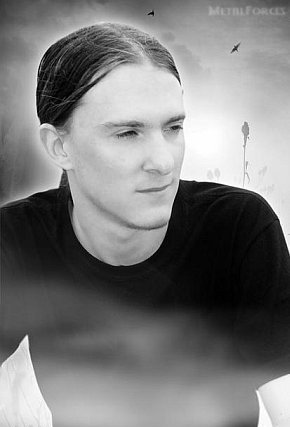
|
London, England-based South African illustrator Rhett Podersoo designed the artwork for the effort, having previously designed pieces for For Lies I Sire and the October 2009 EP Bring Me Victory. “I really liked his style, and so it was good to return back to him for this album,” the frontman reckons. “We were considering using another artist in the early days of writing the album because the album was taking on an apocalyptic sound, and so we wanted something representative of that. We were working with an artist going down one route, and then when I wrote the lyrics, put the lyrics on the album, sang them, and recorded them, the album veered off course dramatically. We needed a new artwork for it because what we were working with worked with the music, and if we were doing an instrumental album it would’ve been fine. Once I had put the vocals on the album though, it took an extreme right and went down towards a different route altogether, and so we needed to change the artwork quick. Rhett wasn’t in from the start, but when we needed him he pulled out the goods for us. I think it’s come out beautifully.”
A music video will be filmed for the track ‘The Poorest Waltz’. “I met a Gothic dance troupe a couple of years ago, and we thought we’d work with them at some point,” Aaron discloses. “When we had written the song ‘The Poorest Waltz’, I thought ‘This is ideal for those girls.’ They all dress in black and they wear blindfolds, and they do this amazing dance routine. I’ve given them the tracks, I’ve given them the lyrics, and I’ve told them what the song is about. I’m getting Charlie over from Sweden, who’s gonna film it all. It’s a story about two guys from a village who in the middle of the night sneak up to the sanitorium on the hill where all the outcasts from the village are kind of stored as it were.
“They break into the dormitory where all of the blind girls are kept, and they quite innocently take a bit of moonshine up with them. They take an old gramophone and they crank it up, but keep the volume low. They have a few drinks and they dance with the blind girls just to give them a little bit of relief, a little bit of fantasy. It’s all lovely. At the end of the night they pack their gear away, they sneak back down to the village, and no-one knows this funny little midnight tryst is going on. It’s very innocent, but almost romantic. Because of the innocence though, it’s not really romantic. It’s just a lovely little, sad tale where these girls are given a little bit of relief every once in awhile by these two sneaky little characters, and so the video is gonna be based on that story. Ideally, it’s gonna be filmed at The Dance Mill in Halifax which works well because it’s an old mill, It can double up for a dormitory no problem.”
The music video for ‘The Poorest Waltz’ will very much reflect its lyrical content. “The storyboard is the lyrics,” the singer augments. “It’s one of those videos where you could almost have karaoke words on screen; as I say things, they will appear. It’s almost like somebody narrating a story. It’s pretty straightforward; it’s a story with a start, a beginning, and an end. The lyrics are easy to read. We’re not challenging listeners with anything obscure – there’s no Latin like I’ve done in the past, or anything obscure. It’s a very, very simple story, a nice little tale about a couple of urchins who’re just offering a little bit of relief to some poor souls that the local village have deemed outcasts, and then it’s all over come dawn the next day.”
As previously touched upon during this feature, My Dying Bride are due to issue a four-track EP in roughly April 2013. The EP in question will be entitled The Manuscript. “They’re very similar to A Map Of All Our Failures because they were written and recorded at the same time, except for one song,” Aaron critiques. “That really stands out (laughs)… It’s full on sort of epic death metal; it’s swords and axes, a proper warrior battle kind of track that’s almost medieval in flavour. You can almost picture the scene; it’s set in a snowy kind of mountainous landscape. There are sound effects and all sorts of mayhem going on in it, and death metal vocals not quite all the way through it, but near enough. It even has a Swedish title which because my Swedish isn’t great, I’m not gonna repeat here (laughs). I need to get the pronunciation right before I do that.
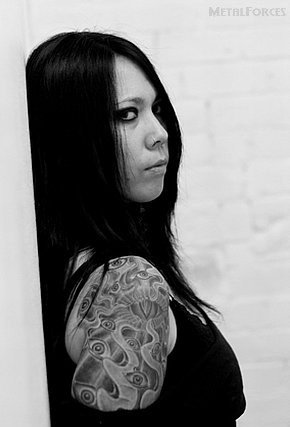
|
“Yeah though, we’re probably gonna do a video for the title track which is currently called ‘The Manuscript’. It’s going to be done by Charlie Granberg who did the ‘Bring Me Victory’ video, but prior to that Charlie and My Dying Bride are working on a video for ‘The Poorest Waltz’, the second song on the album. There’s gonna be a video for that as well that will be a shot towards the middle of October. So yeah, a couple of videos from My Dying Bride are coming soon as well.”
The Manuscript’s tracks will be similar in length to those included on A Map Of All Our Failures. “When we had 13 songs on the computer we were looking at three to four of them, and they were 7:47 which was a bit of a coincidence,” the mainman discerns. “We don’t know how or why that happened, but that was the case. There are probably a couple on the EP which are 7:47 as well. A song’s over when it’s over, and the evidence of that is The Barghest O’ Whitby. We don’t try to aim for a three-and-a-half minute track to get a bit of radio airplay – that will never happen from My Dying Bride. If a song happens to be over in three-and-a-half minutes, that’s fine. That was just how it should be, but we never purposely try to write a song with any specific length. We all contribute and when we’re all happy that the song’s over – whether it’s three minutes or 30 minutes – it’s as simple as that.”
My Dying Bride’s back catalogue has grown over the years, meaning the quintet have a wider range of cuts to choose from in devising a setlist. “Obviously with each album it gets more and more difficult because we’ve got more songs, but the same sort of time,” Aaron laments. “Some songs are gonna have to fall by the wayside, but how we pick a setlist is to simply look at last year’s setlist and not include any of the songs from that setlist on the new setlist. That way we kind of keep it a bit fair. If anyone who has seen us one year comes to see us the following year, you’re guaranteed not to have the same setlist, and that’s really the best way we can do it. We have so many songs to choose from, and that’s quite a good format that works well.”
Many groups simply adhere to almost the very same live setlist night after night. “I suppose it’s easier to do, but we’ve got tons of stuff to choose from,” the co-founder submits. “It doesn’t matter what you do; you always see someone in the crowd screaming for a song that was perhaps on last year’s setlist (laughs). It’s inevitable; we’ve got a lot of music now in our history. Especially festivals are the worst, because you generally will only have an hour to cram a good spread from your history into an hour. It’s really difficult, and it gets harder with every passing year.”
‘The Poorest Waltz’ aside, none of A Map Of All Our Failures’ tracks are confirmed to appear in My Dying Bride’s forthcoming live setlists. “If we’re doing a video for it, it makes sense to sing it live as well,” Aaron reasons. “Everybody will see the video, and they’ll want to see it live. That’s perfectly normal, and it’s a great song as well. Plus Hamish will be doing the backing vocals, and I quite like having a band member to help me out onstage. It’s great, and it adds another dynamic to the performance too. ‘The Poorest Waltz’ will definitely be there. We can pick and choose. I’m sure we’re gonna be arguing about which of the new tracks are gonna be included, but we’ll cross that bridge when we come to it. It’s nice to have a good choice. We’d like to choose all of them, but some have to get the elbow. We’d rather not bombard fans with the new stuff, but three to four new songs will be aired on the December tour. We’ll be promoting that album, so it makes perfect sense to do a few songs from it. To do our own shows we’ve got at least 90 minutes, so we can get away with four new tracks and plenty of old classics.”
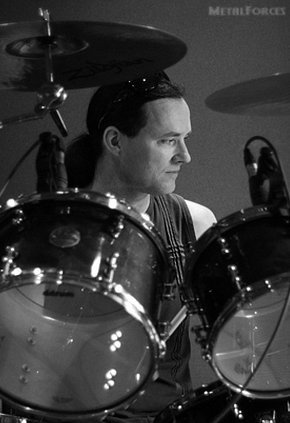
|
2012 marks 25 years since the formation of Peaceville Records, a label My Dying Bride has been signed to since 1992. “The great thing about Peaceville and the reason why we’ve stuck with them for this amount of time is because they’ve never, ever tried to push us or make us into something we’re not,” the vocalist praises. “At no point have they ever said ‘C’mon guys, we need a three-minute song for the radio.’ We delivered The Barghest O’ Whitby to them, and they had no idea what it was about or anything like that. I’m sure eyebrows were raised when they realised that it was a 27-minute long song, but they didn’t bat an eyelid at the same time. They kind of realised ‘Look, we signed My Dying Bride because we like what they do and the last thing we’re gonna do is tell them what to do.’ We already know what to do, so they don’t interfere. I bet there aren’t many bands in the world today who have complete artistic freedom over their work, but we have that. That’s why we stayed with them; they let us do absolutely anything we want, and that is an absolute gem.
“Of course when our contracts are up, we shop around though. We have to have our business heads on at the same time and there are other labels throwing deals at us and asking us ‘C’mon, it’s about time you moved off of Peaceville.’ They’re a great independent label, and there have been bigger labels saying ‘You need to step up a bit with your profile.’ We’ve been thinking ‘Yeah, we kind of see where you’re coming from but then you’re also going to tell us to do this, you’re gonna tell us do that, and we’re gonna say ‘Fuck off,’ and then the contract will be over.’ We’d be left flat on our face and crawling with our tail between our legs back to Peaceville, because we’d end up being a little fish in a big pond. With Peaceville we’re a big fish in a little pond, and we’ve got some control. We like the people who work there, and they listen to us.”
A Map Of All Our Failures was released on October 15th, 2012 in Europe and subsequently on the 16th in North America, all through Peaceville Records.
Interview published in October 2012.
